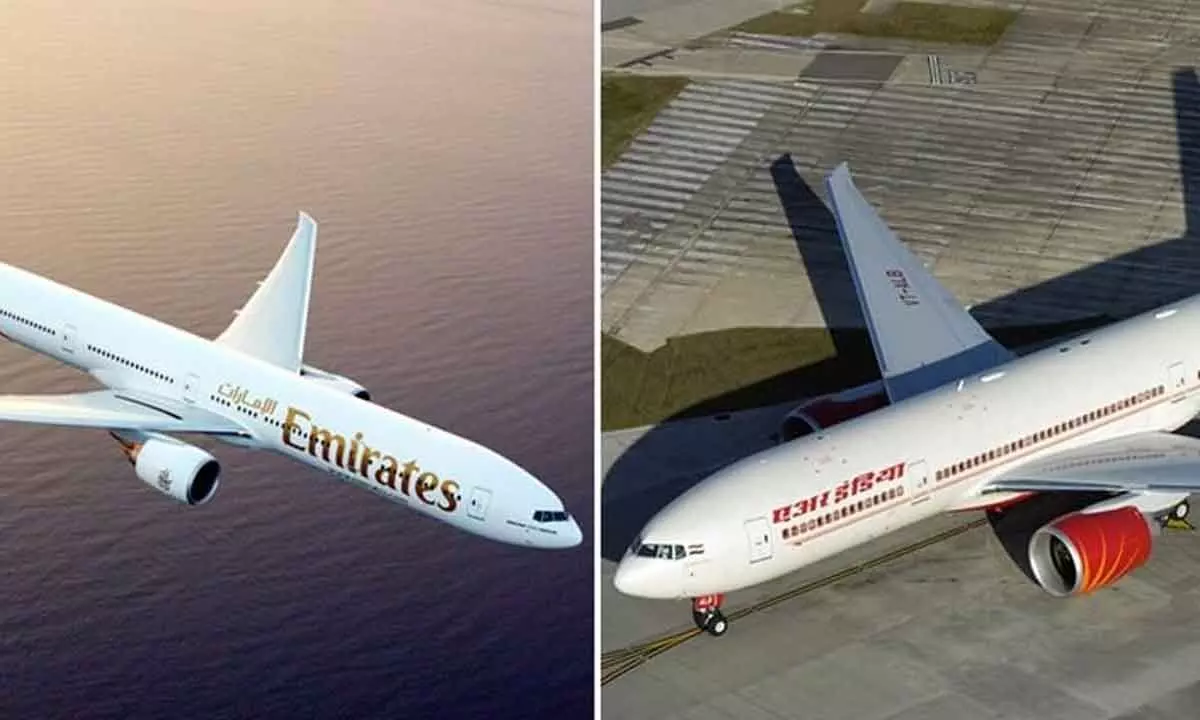Middle East and Indian aviation synergies augur well for the future
Air India and Emirates were the first and third largest carriers for international capacity in April
image for illustrative purpose

The common perception is that this market is dominated by Middle East carriers serving Indian international travellers. The reality is that there has been a significant Indian migration to the Middle East
Middle East aviation has experienced astounding growth with the fastest-growing country markets including Qatar (12.5% AAGR), United Arab Emirates (9.3%) and Saudi Arabia (6.5%).With airline capacity of 718bn ASKs in 2024 compared to 124bn in 2000, growth is set to continue as this exciting market now enters its next phase, bringing both rapid growth and market complexity.
Saudi Arabia’s General Authority of Civil Aviation (GACA) recently released its inaugural State of Aviation report, which found that the Saudi aviation sector made a $53 billion contribution to the country’s economy and supported around 9,58,000 jobs. The regulator also used the forum to release its general aviation roadmap to develop the business jet and private industry tenfold to $two billion by 2030, with six dedicated general aviation airports and nine terminals – forecast to create 35,000 new jobs. Saudi Arabia is aiming for 7.5 million Indian visitors by 2030. Due to India’s rapid economic growth, India will have 177 million households by 2030 having $10,000 to $35,000 income annually.
In April 2024, India’s international airline capacity reached 7.3 million seats, an increase of 17% from the 6.2 million seats scheduled in the same month in 2019. This growth highlights the strength of India’s aviation recovery post-pandemic.
Looking back over the last decade, India’s international capacity has grown on average by 4.5% each year from a base of 4.7m seats in April 2014. However, what has not changed is the Middle East region’s dominance of India’s international capacity. Ten years ago (in April 2014) the Middle East accounted for 48% of India’s international capacity, in April 2024 that figure has increased slightly to 50%.
Whilst the common perception is that this market is dominated by Middle East carriers serving Indian international travellers wishing to connect through Middle East hubs onto other countries, the reality is that there has been significant Indian migration to the Middle East. An estimated 3.6 million Indians are now based in the UAE, with a further 2.6 million in Saudi Arabia. This demographic contributes significantly to the market, as levels of traffic visiting friends and relatives back in India will always form an important aspect.
Air India and Emirates are the first and third largest carriers for international capacity in April 2024, the same positions as held in April 2014.
The aviation industry is at a juncture marked by changing market dynamics and rapid innovation. Globally, the sector is rebounding from the unprecedented impacts of the Covid-19 pandemic. Airlines are expanding their networks and modernizing fleets to meet surging demand. CAPA India estimated domestic passenger traffic to grow to approximately 161 million - 164 million from about 154 million and international traffic is set to reach 78 million from 75 million.
According to the International Association of Air Transport Association (IATA) report, an aggregate return above the cost of capital, however, continues to elude the global airlines as the industry is expected to earn a 5.7 per cent return on invested capital, which is 3.4 per cent below the average cost.
Over 150 aircraft belonging to Indian airlines are grounded, and that number could increase to 200, CAPA India said in its mid-year outlook on Monday.
Indian carriers have a fleet of around 750 aircraft. According to CAPA India, 161-166 planes are grounded at present; thus, grounded planes account for a fifth of the combined total fleet of all carriers.
Go First’s 54 planes were grounded after the airline filed for insolvency in May.
IndiGo’s 45 A320Neo planes are grounded due to non-availability of engines (CAPA report puts the figure at 55), and the number is expected to rise by another 30-40 as the airline is expected to ground more planes for inspections in the first quarter of CY 2024.
Yet despite the supply chain issues and Go First bankruptcy, domestic and international traffic will record growth this year, the consultancy said.
“Despite the sudden exit of Go First in May, the fact that there are 150 plus aircraft and the worsening supply chain issues, domestic traffic has shown resilience. CAPA Advisory expects traffic to reach around 155 million passengers in FY 2024 or 15 per cent higher than last year,” it said.
“International traffic has also maintained growth in line with our original guidance and is expected to end the year at around 70 million passengers despite the large number of aircraft on ground,” CAPA India said.

